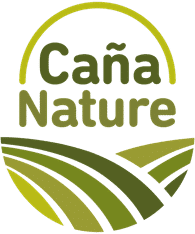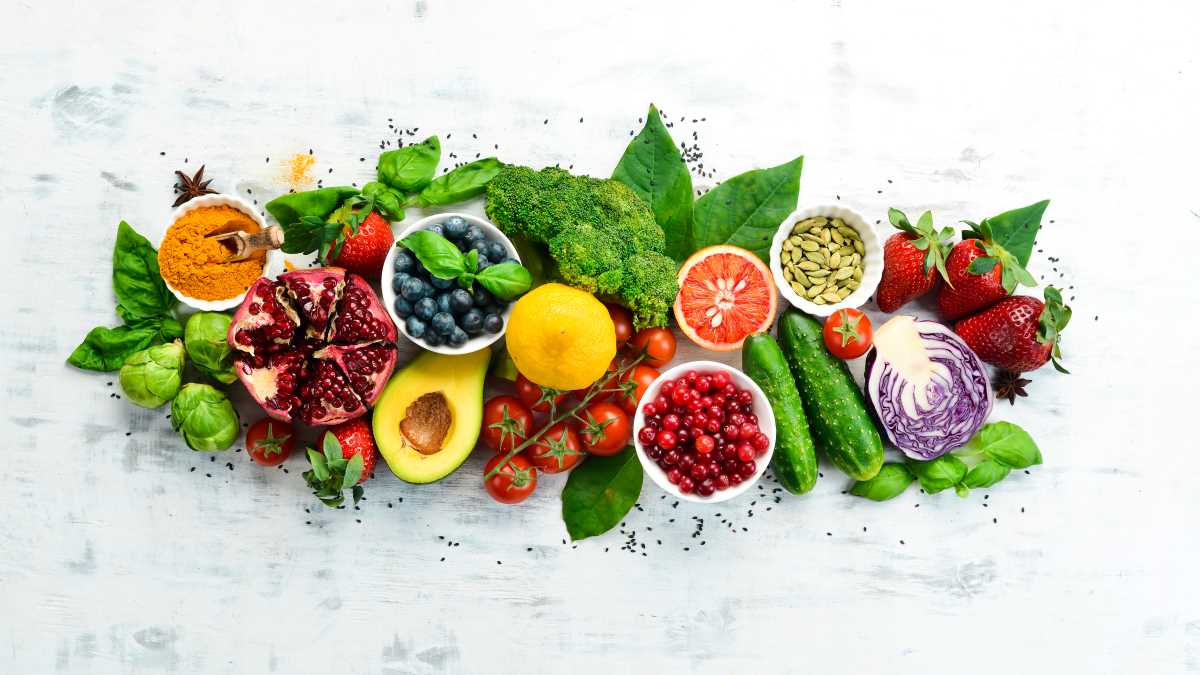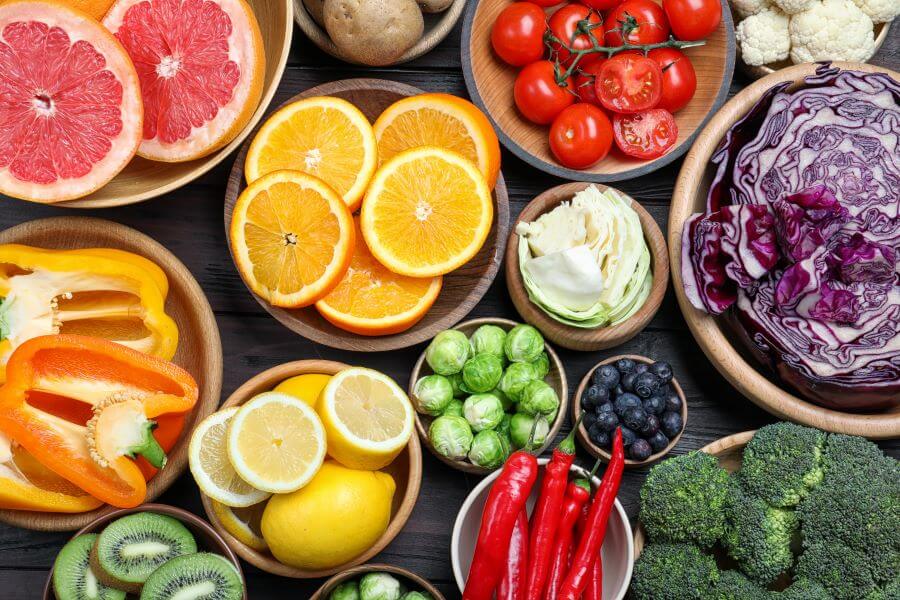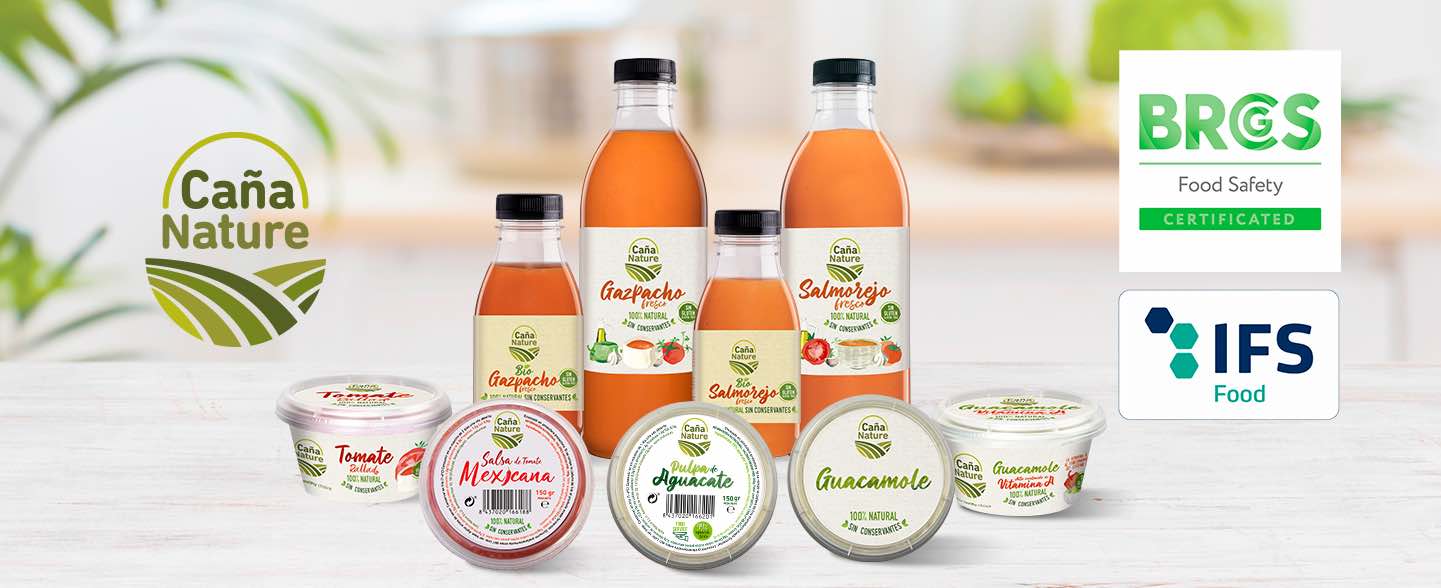At Caña Nature you will find a wide variety of 100% natural fresh products, which we prepare without additives or allergens, so that they are suitable for everyone and compatible with all types of diets.
All the recipes with which we prepare our products are prepared so that you can enjoy them without gluten, lactose or eggs. In fact, they have the recognised V-Label quality seal as vegan products.
Thanks to our production process, we are able to offer our products without food allergens, but we think it is important for you to know what they are and how to identify them in other products.
What are food allergens?
Food allergens are compounds that are present in food and that, for some people, can generate a reaction in their immune system.
This means that in many cases we can consume a product with these food allergens and, if our system does not react, we will not notice any symptoms.
However, if our immune system reacts, the consequences can be very varied and even dangerous for our health.
What are the most common food allergens?
Food allergens must even be identified with respect to the food being served, processed or handled, based on European Regulation 1169/2011.
This regulation identifies the following allergens that must be labelled and which, of course, are also the most frequently occurring allergens in food:
- Lupins and derivatives.
- Celery and derivatives.
- Peanuts and derivatives.
- Cereals containing gluten.
- Crustaceans and derivatives.
- Sulphur dioxide and sulphites.
- Nuts and derivatives thereof.
- Sesame seeds and derivatives.
- Eggs and egg derivatives.
- Milk and milk derivatives (including lactose).
- Molluscs and derivatives.
- Mustard and derivatives thereof.
- Fish and fish by-products.
- Soya and derivatives.
Generally speaking, the most common allergens are cow’s milk, seafood in general, some fruits and nuts (especially peanuts and walnuts), pulses, wheat and egg.
What are the most common allergen icons?
If you are allergic to these food compounds, it is important that you can identify them before eating any food. To make this task easier, food allergens are identified with 14 icons, which are very recognisable:
- Crab: The food is a crustacean or has traces of crustacean.
- Clam: The food is a mollusc or also has traces of a mollusc.
- Fish: The food is fish or a product containing fish. Please note that you can be allergic to certain types of fish and not to others.
- Wheat: This is the symbol for gluten and means that the product is not suitable for people with coeliac disease or intolerance.
- Eggs: Any product made with eggs must bear this symbol.
- Peanuts: Symbol associated with any product with traces of peanuts. There are many more of them on the market than you might think.
- Soya: Another food allergen identified and present in many products, although its symptoms are not usually severe.
- Milk jug: The food is milk or has traces of milk, thus being important also in relation to lactose.
- Nutshell: This is the symbol generally associated with all nuts. However, it is possible to have an allergy to a few and not all of them.
- Celery: The food is celery or a derived product.
- Mustard pot: People can be allergic to spices. Of these, the most famous is mustard allergy and it is present in many other products as well.
- Seeds: The food contains sesame seeds.
- Symbol E X: The food uses the preservative sulphur dioxide or sulphites.
- Lupins: Widely used in products in which they are used as gluten substitutes, but for many people they cause allergic reactions.












